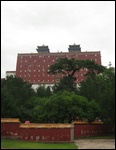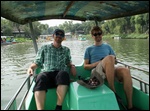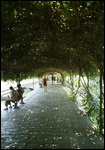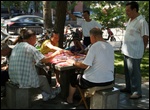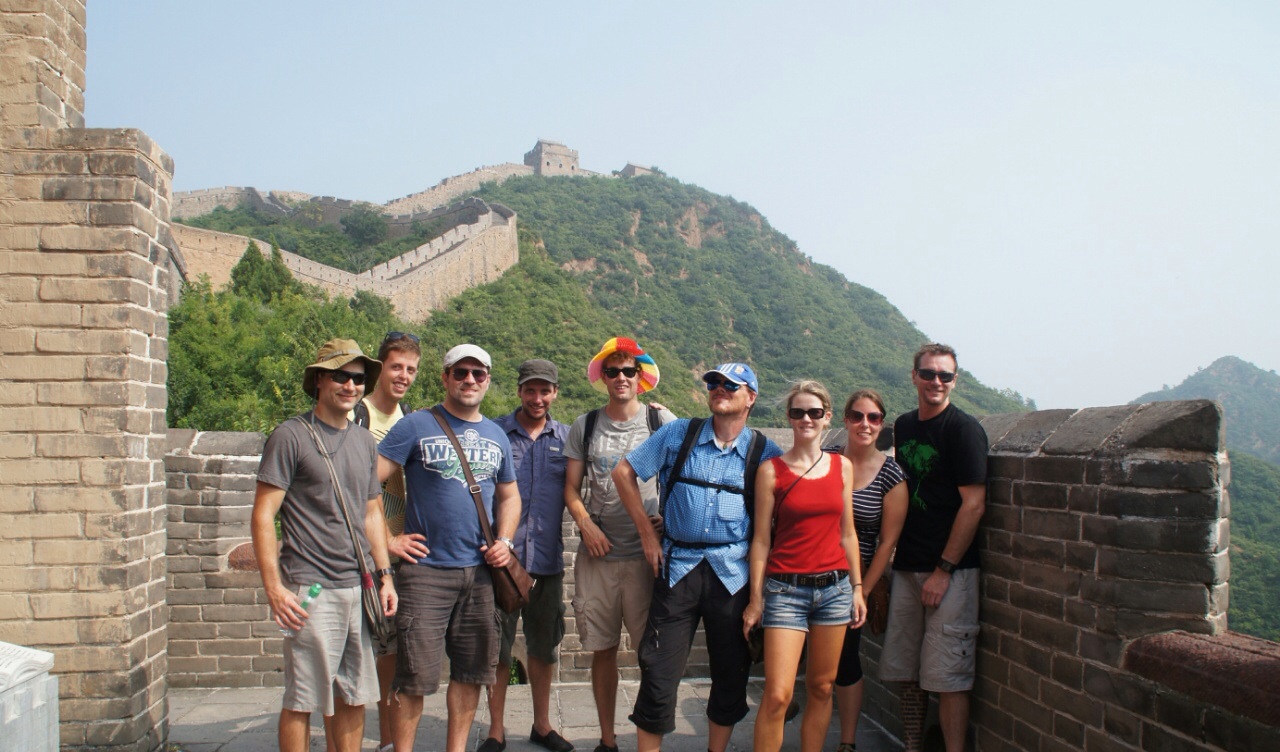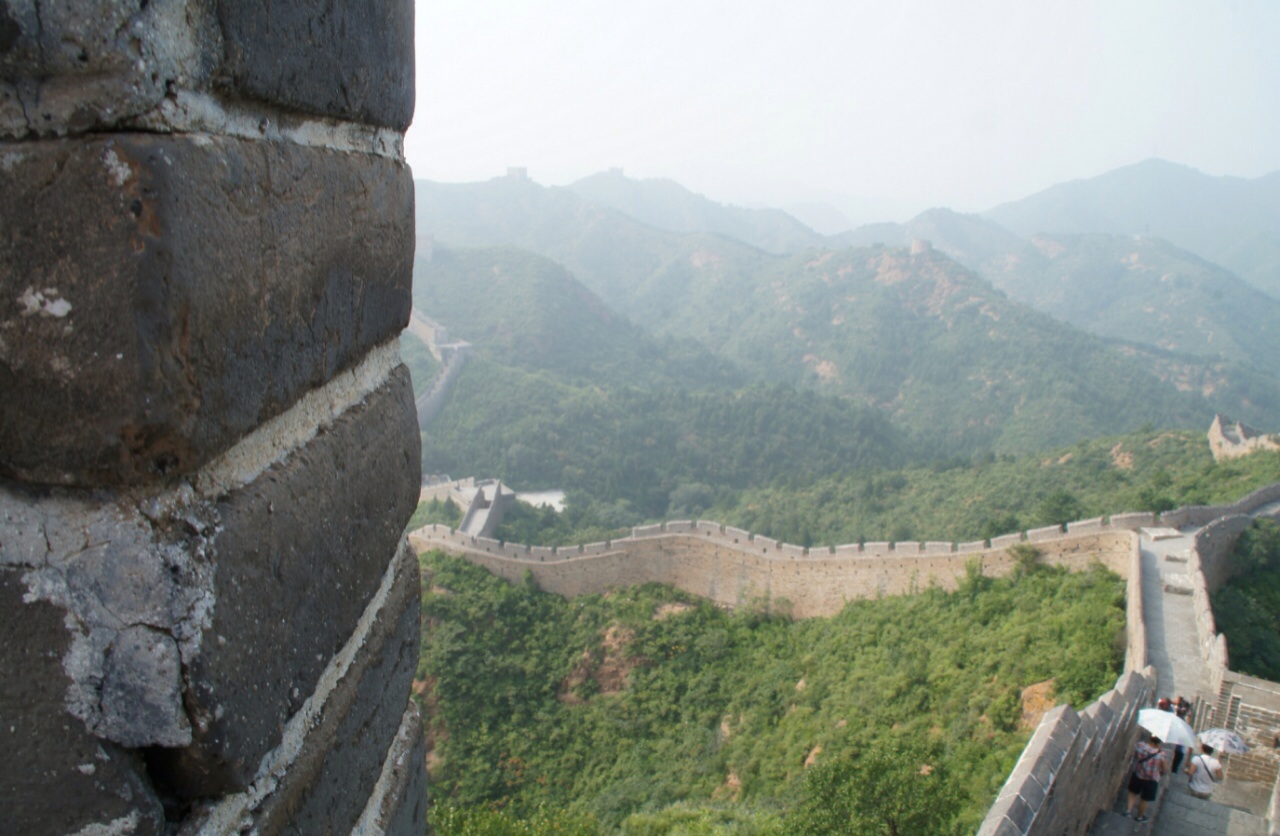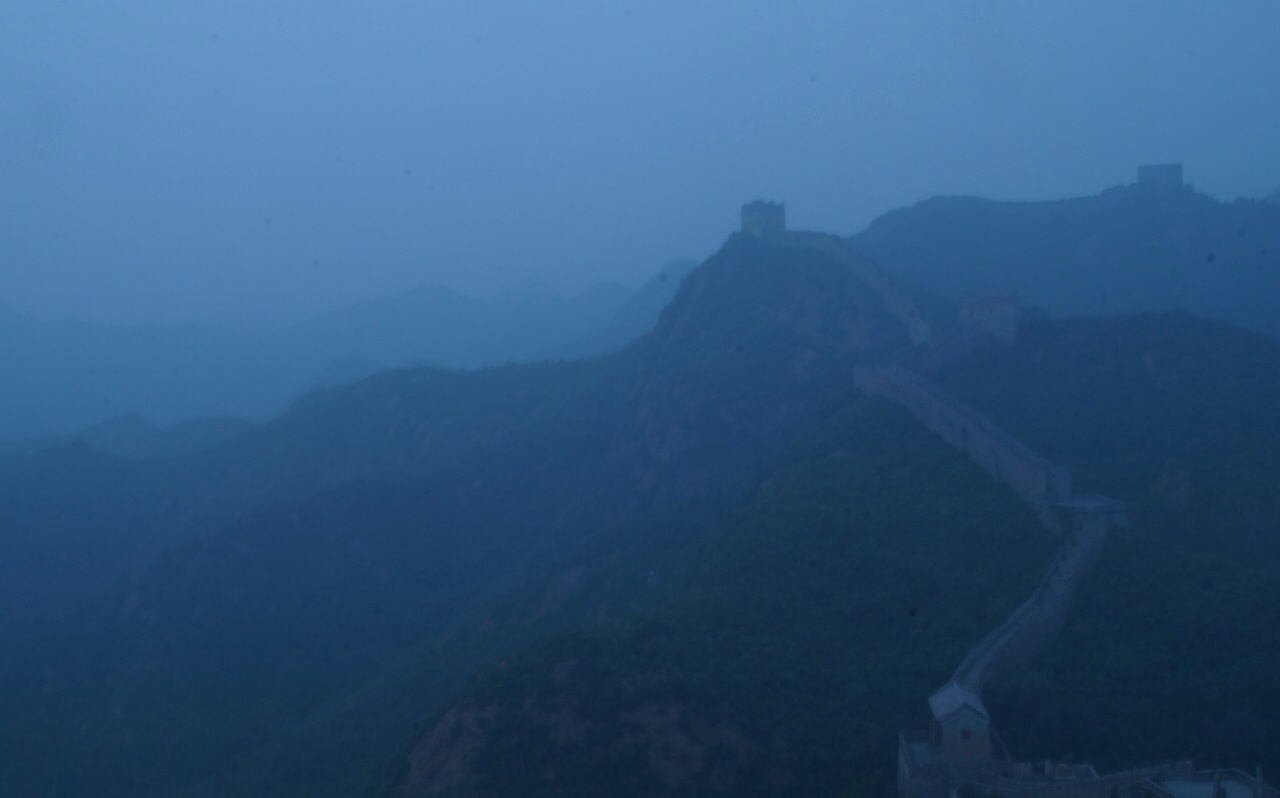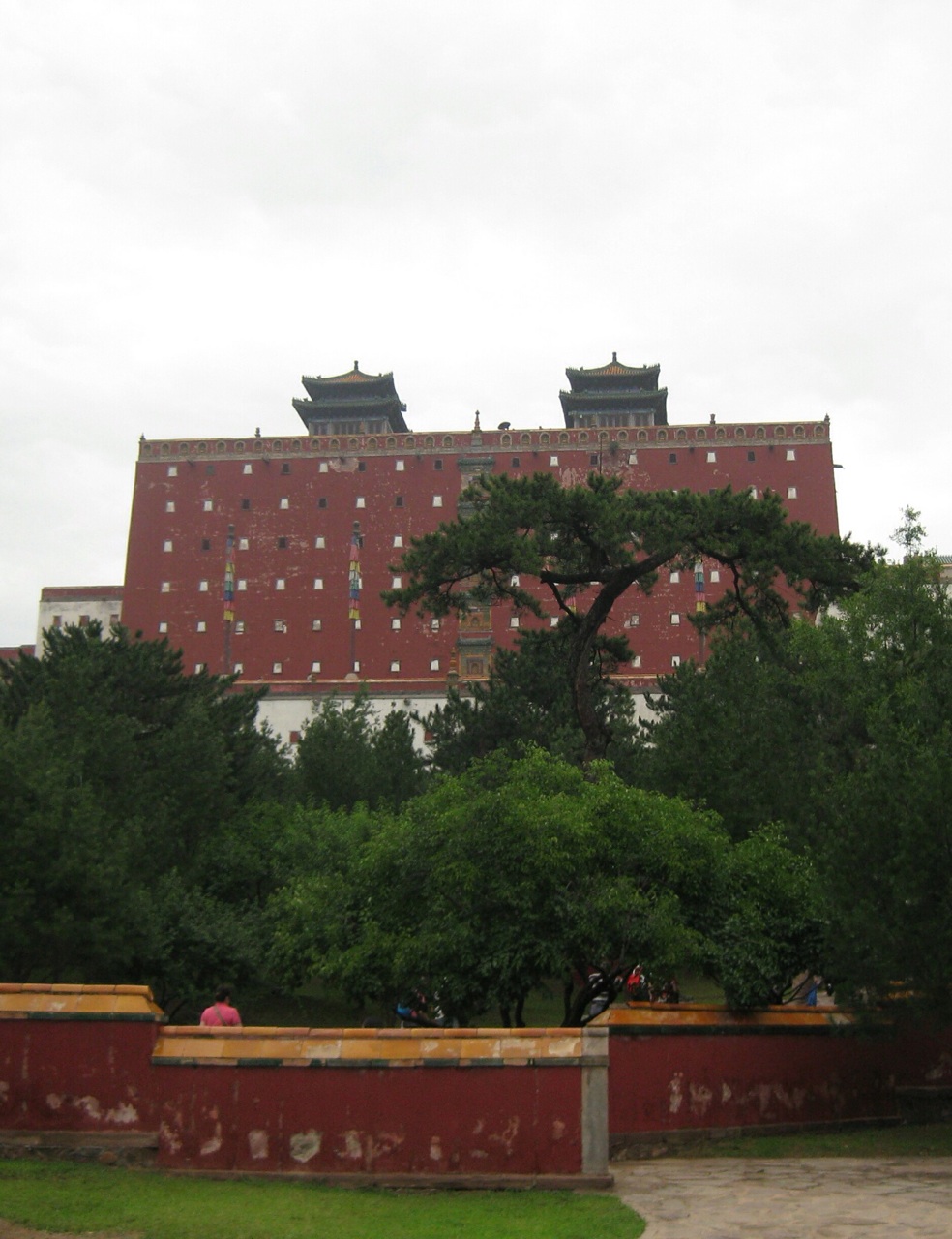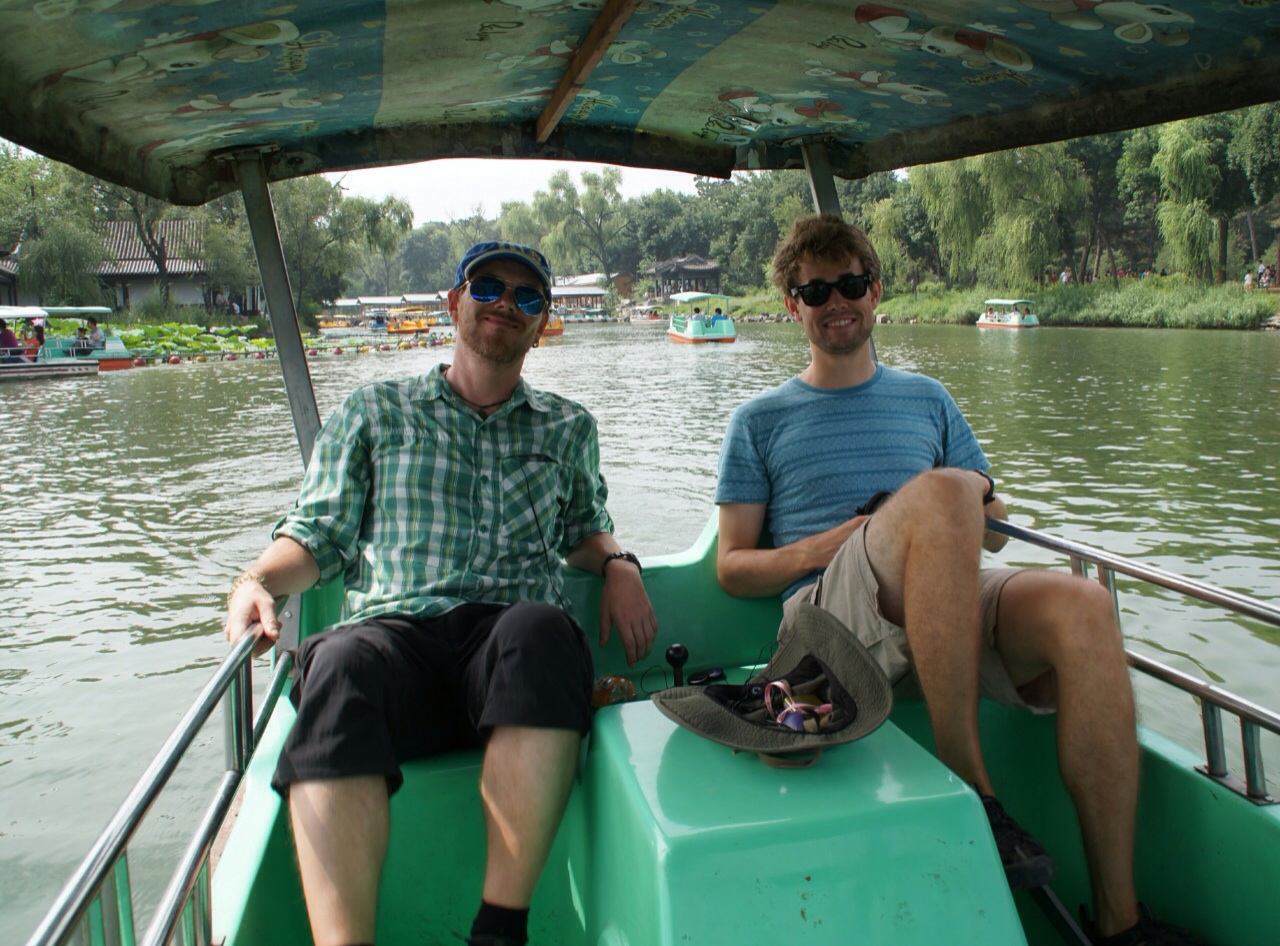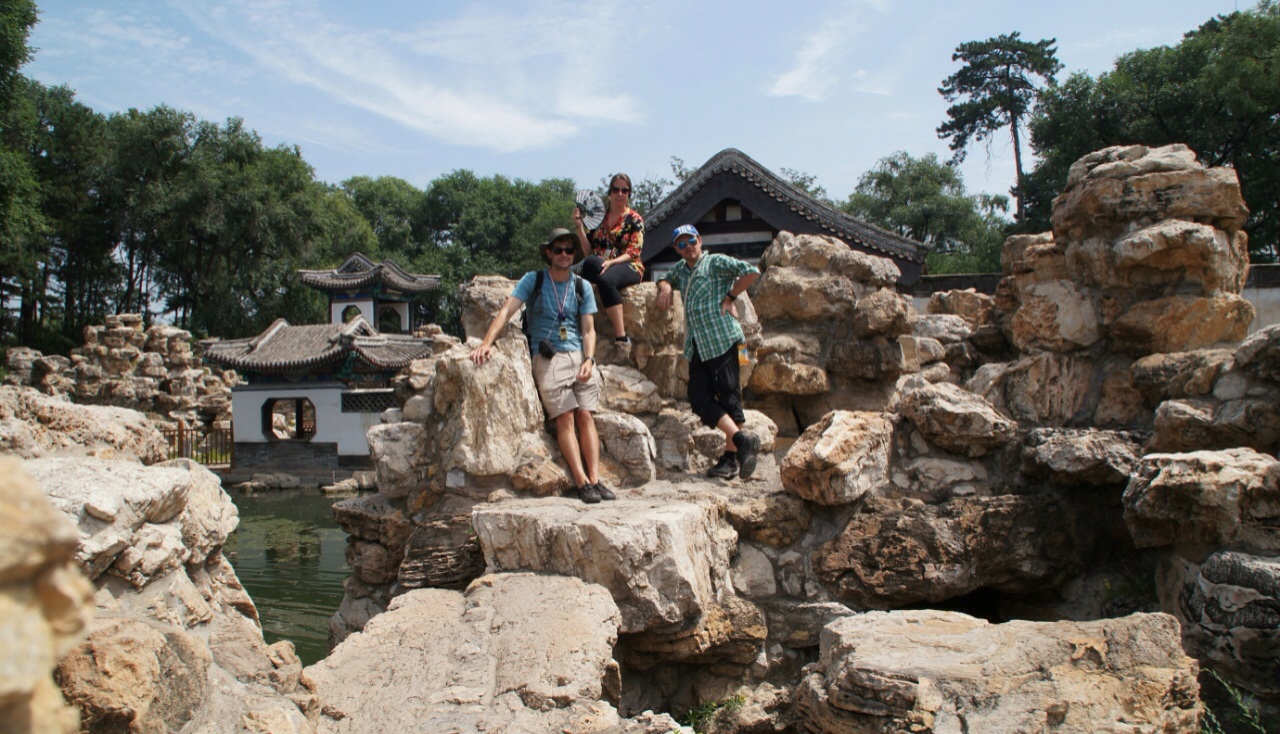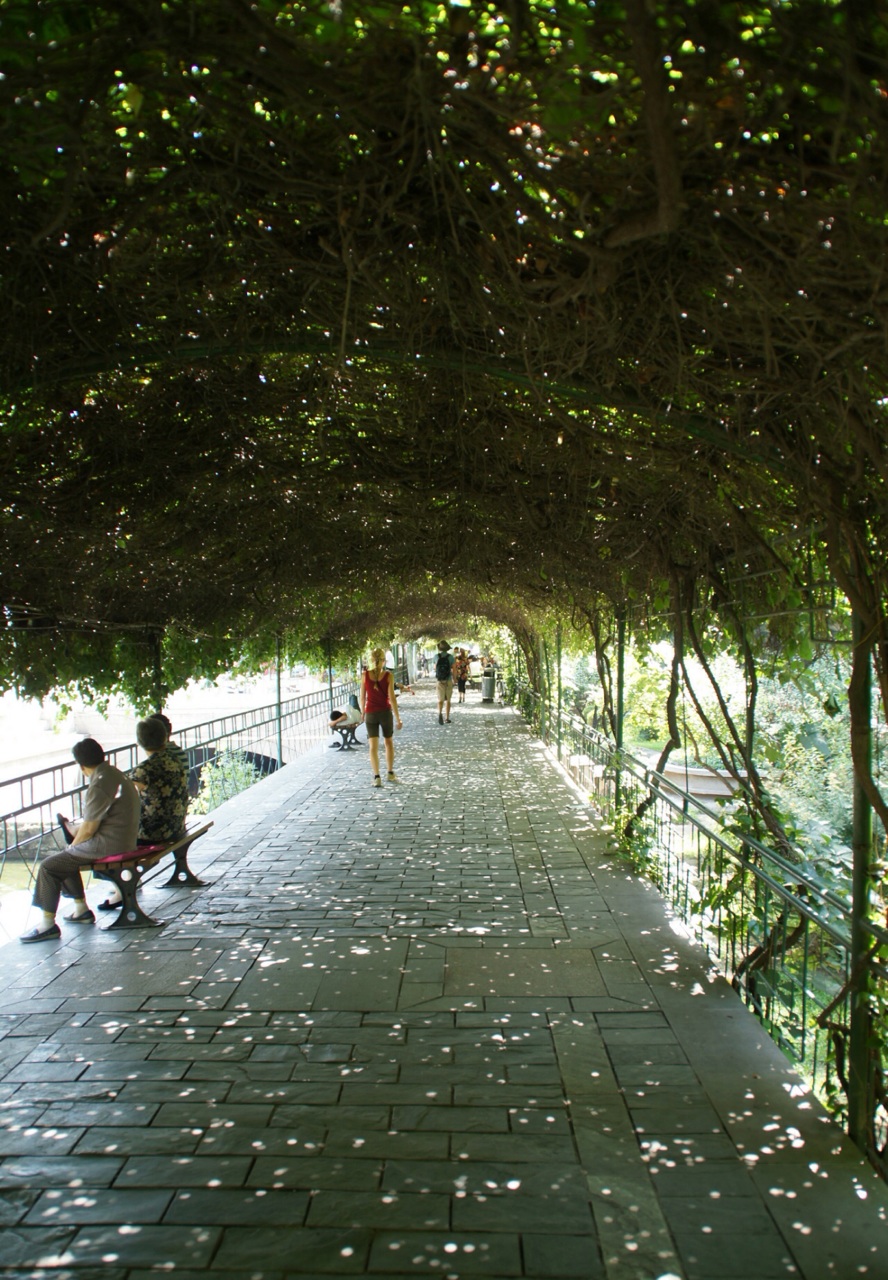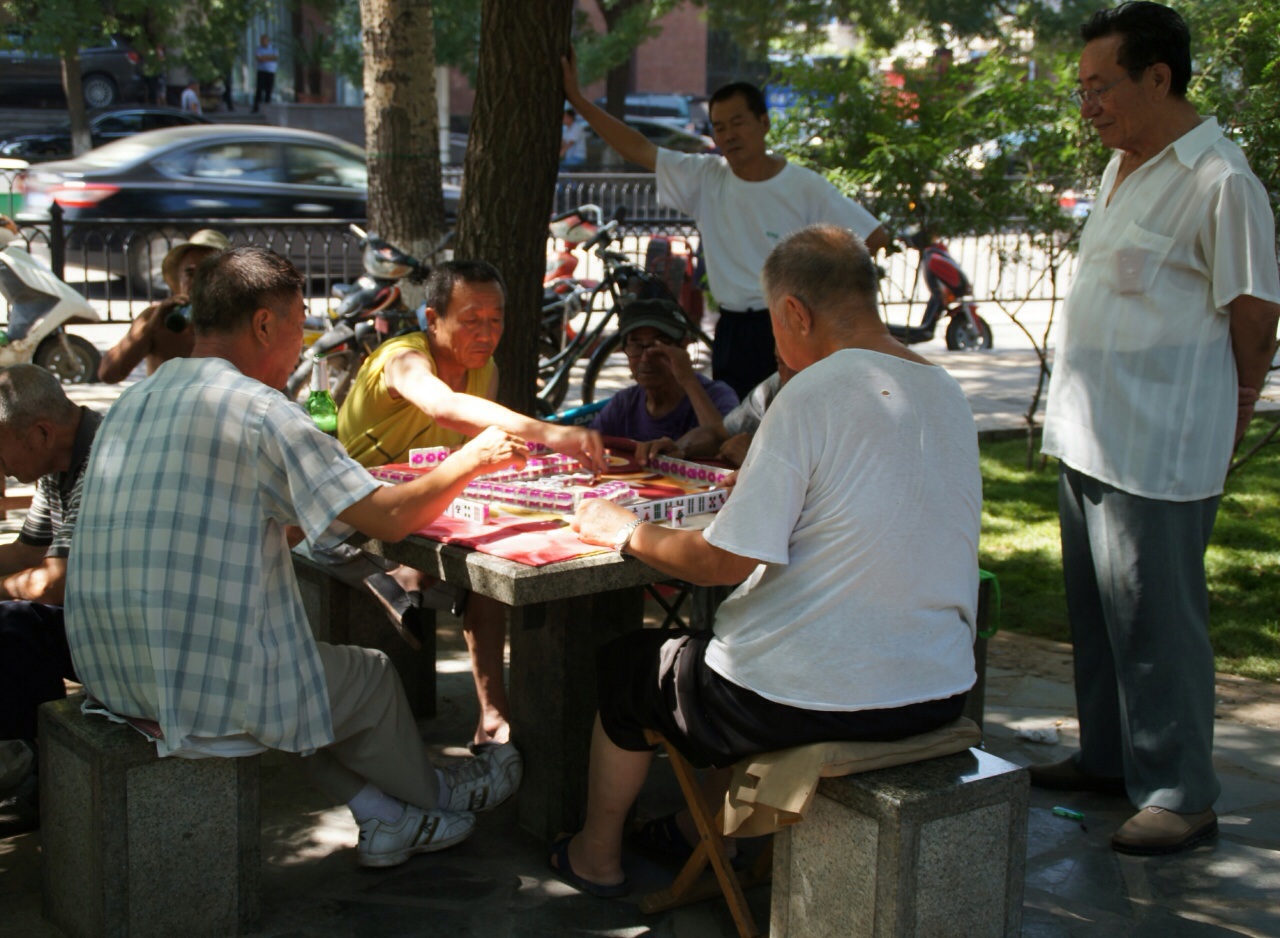In China there are walls. Some of them are great. The loosely connected network of walls, barriers and watchtowers is called the Great Wall of China.
There are many places you can visit the Great Wall of China, and three hours drive from Beijing lies Jinshanling, a one-horse-town that's refreshingly devoid of tourists, both on and off the wall. We took a hike up to the enforcements, and with rucksacks on our backs and cameras at hand we spent a few hours hiking up and down the stretch, ever so often posing for silly pictures. A group of older ladies followed us, being friendly and helpful. Despite being told repeatedly that we wouldn't buy anything, they persisted in their fruitless pursuit.
The rucksacks of the well prepared contained snacks and drinks, because the wall is a great place to relax, have a beer and enjoy the sunset. Which we did. Too bad the cloudy, hazy sky didn't provide the best conditions for sunset photos.
Next stop on the route through northern China was the summer retreat of the old emperors, the sleepy little hamlet (only about 400 000 inhabitants) of Chengde. As an imperial town, along with the empire's strive to accomodate all forms of buddhism, there are a great many temples in the area, all lined up from east to west. The most important ones are Puning temple, with the world's largest wooden buddha, and Potalaka temple, both copies of the originals in Tibet. Most of us opted to follow Claire to Potalaka. If you're really into temples or if you have seen or intend to see the original in Tibet, by all means, go. Else, save your 80 yuan. Definately save your 40 yuan on the audioguide; the accent is tough to understand, and the GPS that's supposed to automatically inform you on precisely what you're standing in front of, works randomly, if at all.
The highlight of Chengde for those all templed out is the summer resort of emperors of yore. Walled away from the bustling city noises, it contains no less than eight connected lakes, along with parks, pagodas, teahouses, gers (or possibly yurts) and a forest area with deer and rabbit. After taking a spinning session (only without the overly enthusiastic instructor) in the form of a paddle boat tour, the rest of the park was explored on foot. Prices were high for the well-needed water and ice-cream, but still happily payed for, even for the pea-flavoured ice-cream.
The town itself is a happy balance of big and small, lively traffic and calm parks, modern malls and street side fish markets. The river banks provide a nice strolling area, were the locals sit down to play chess, checkers and all sorts of tile games and the river itself provides fishing for those so inclined and equipped. Though both lively and cosy, Chengde has little to offer in ways of what would be called traditional restaurants. Hole-in-the-wall style eateries come aplenty, though, and at the local market one can, by pointing and making hand gestures fill the stomach with all sorts of street food.
A heavy thunderstorm on the last night in Chengde dampened not only the streets but also the spirits, and post dinner drinks was off the agenda. As such, the group was well-rested for the long drive the following day, once again to see snippets of the wall, but this time from afar. By the way, it cannot, despite popular belief, be seen from outer space with the naked eye. Because it's too small and you're too far away or, you know, if your eyes were naked in outer space, you'd die.



